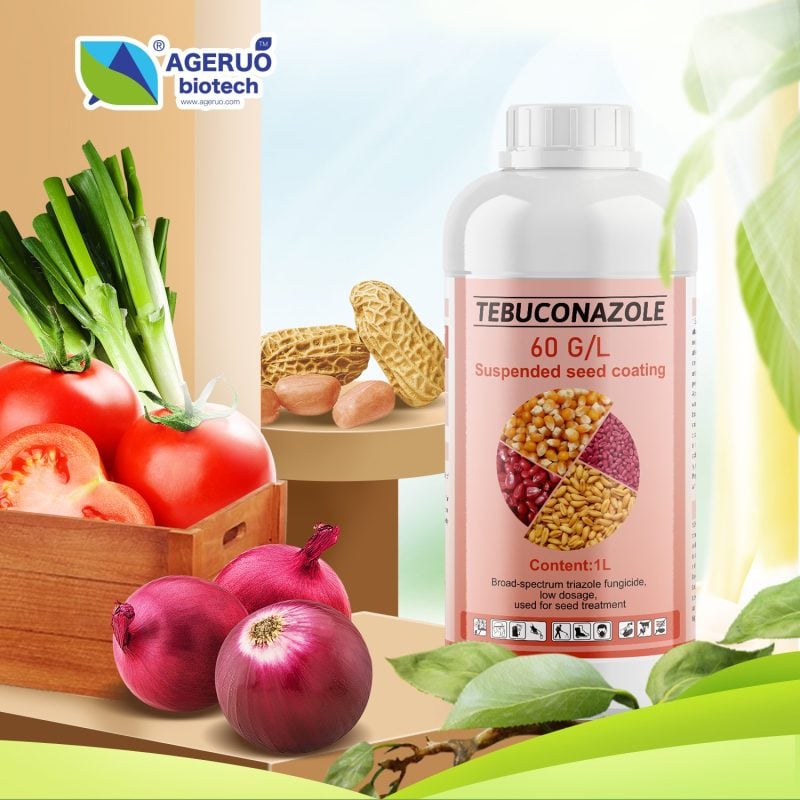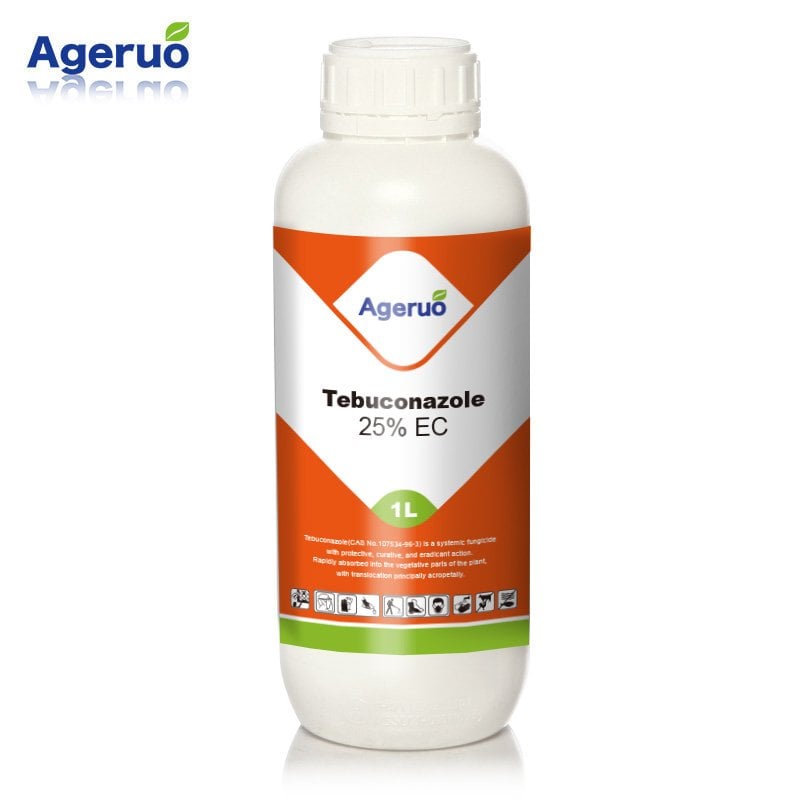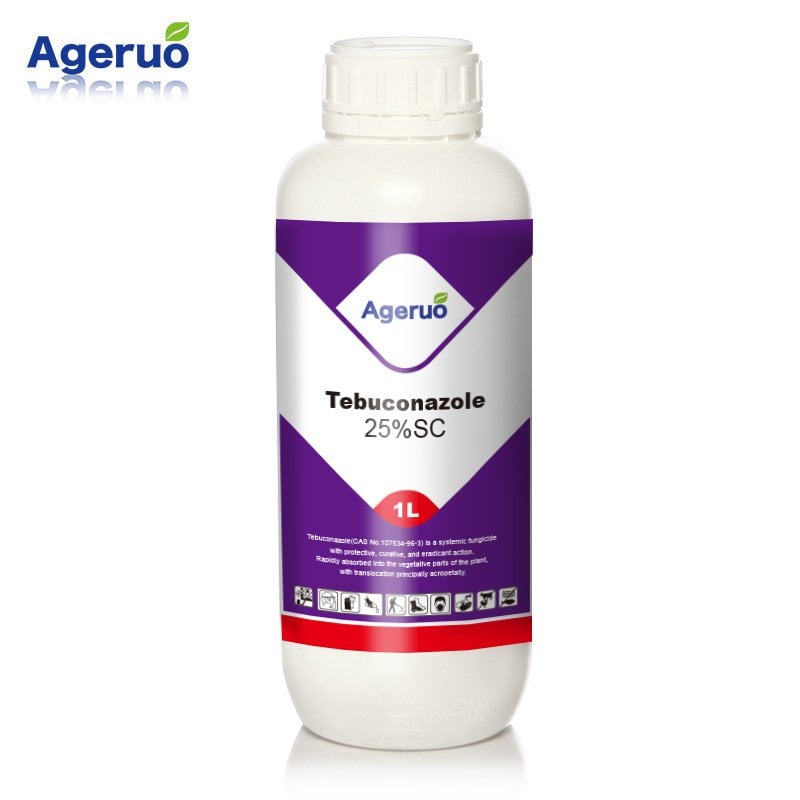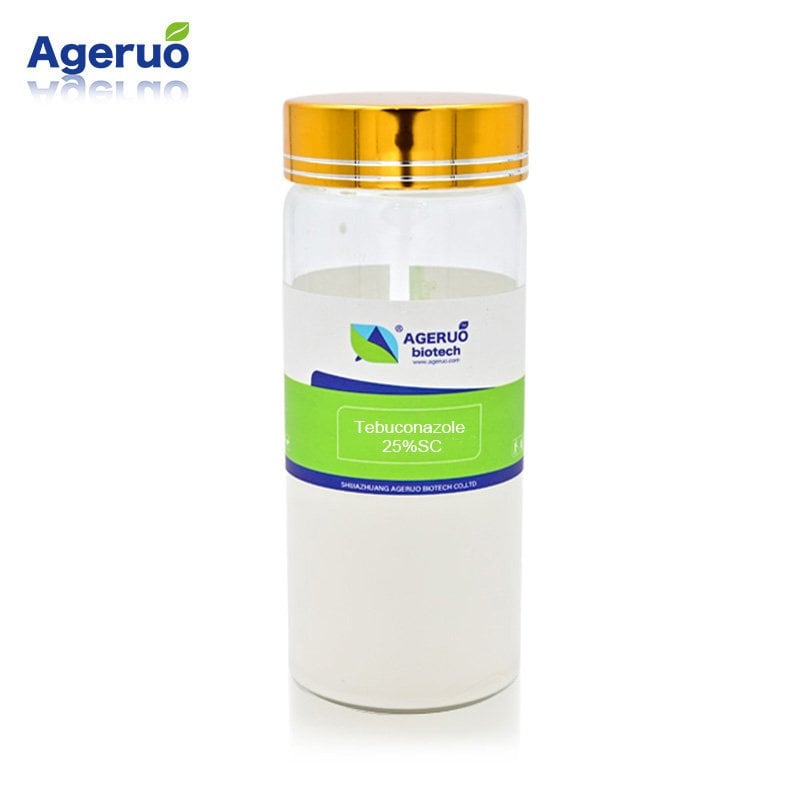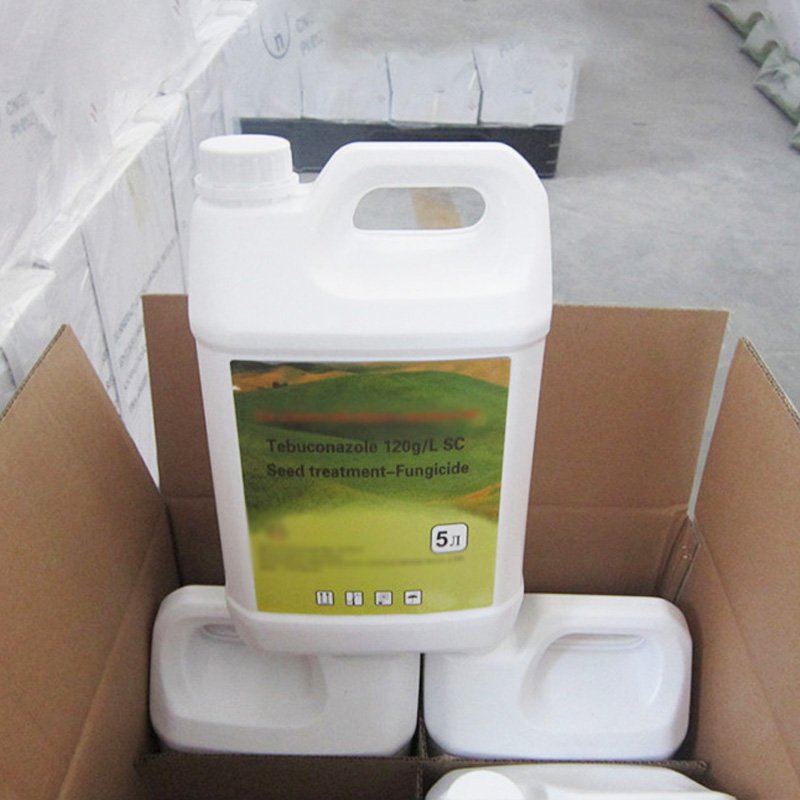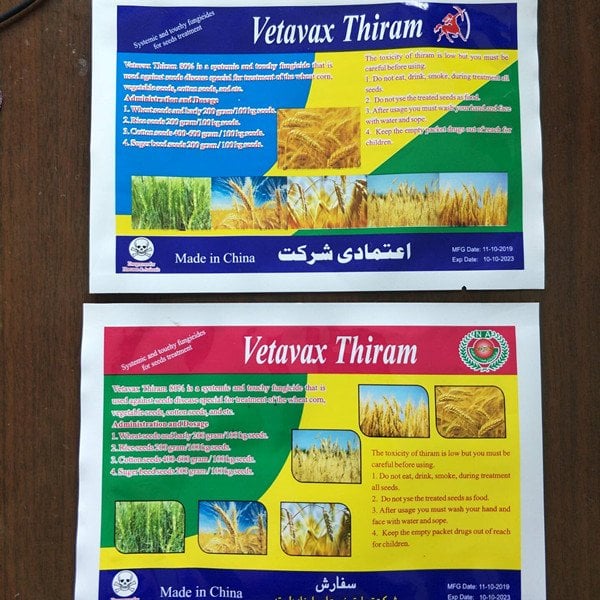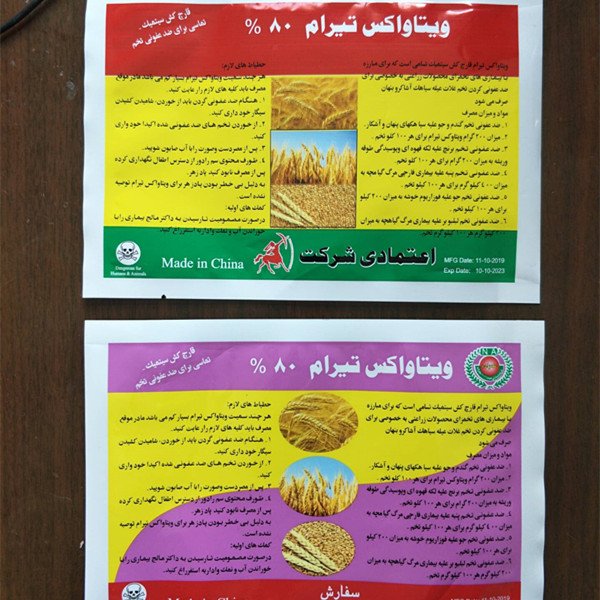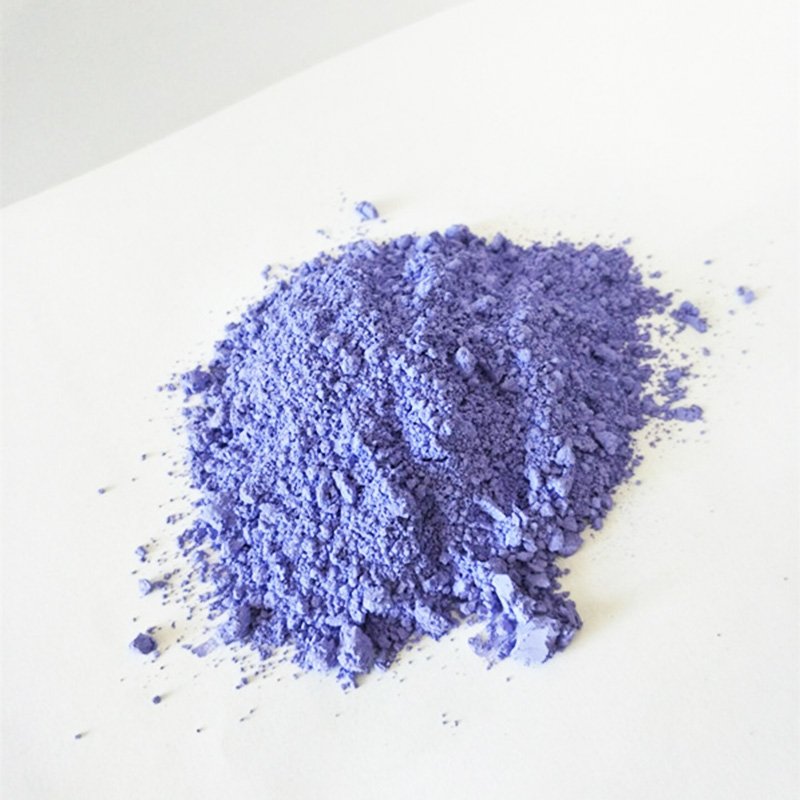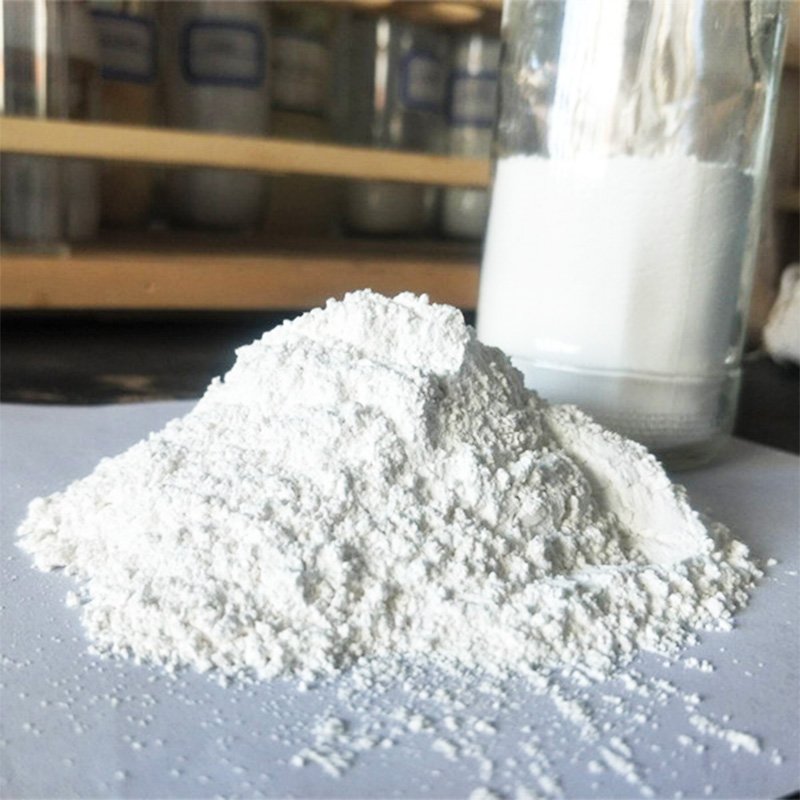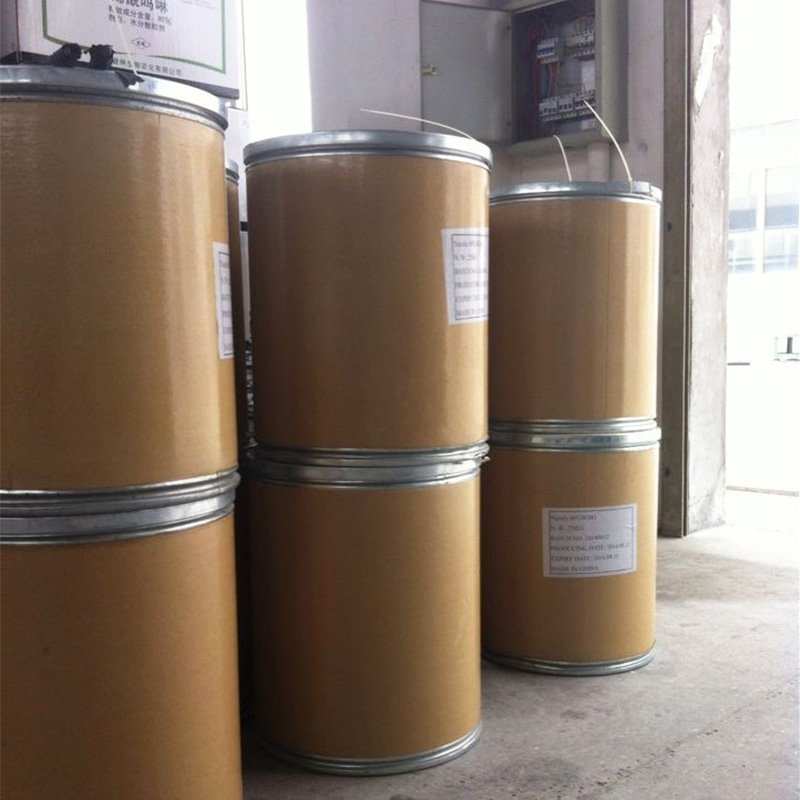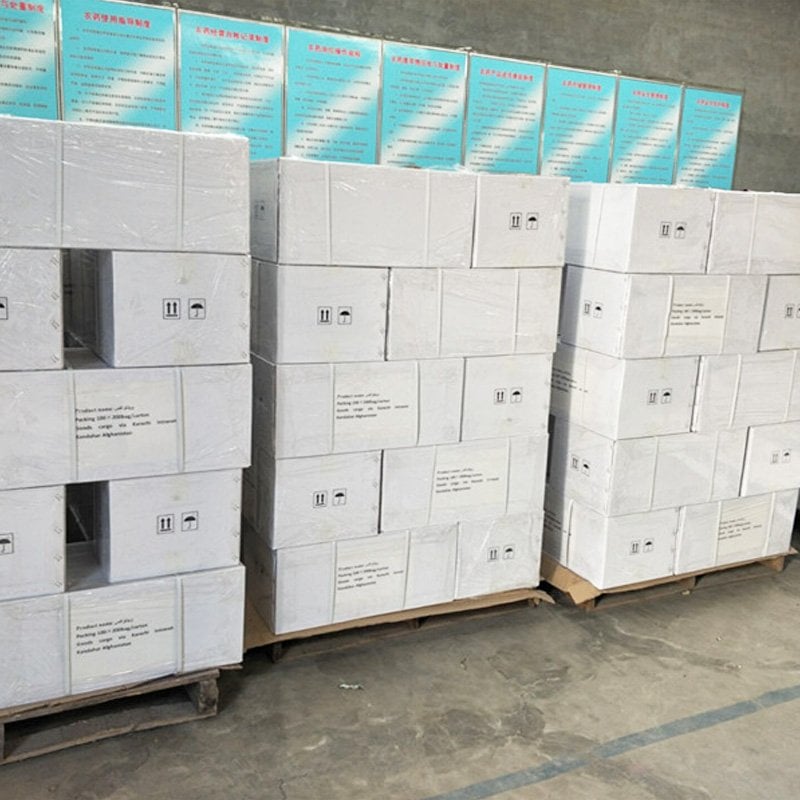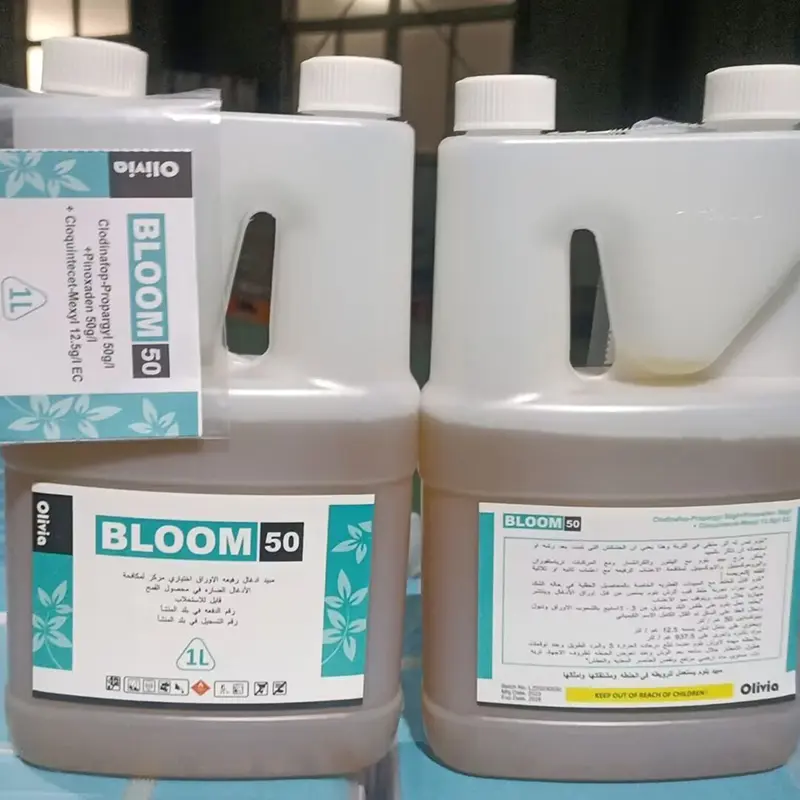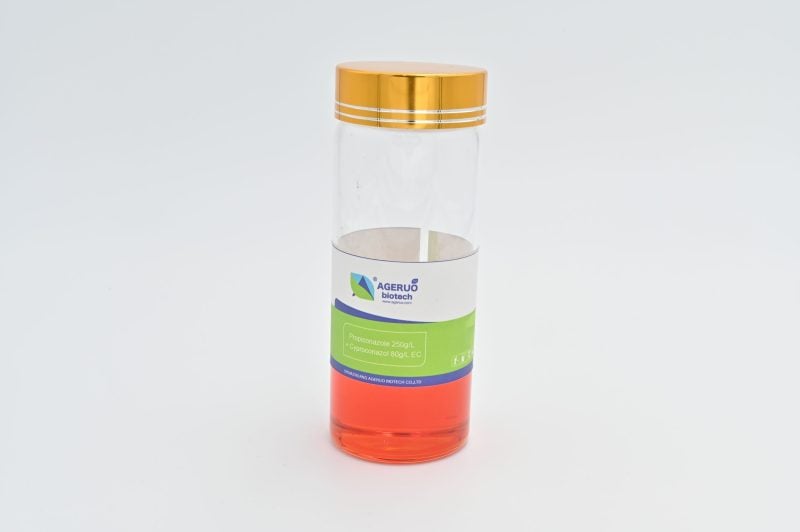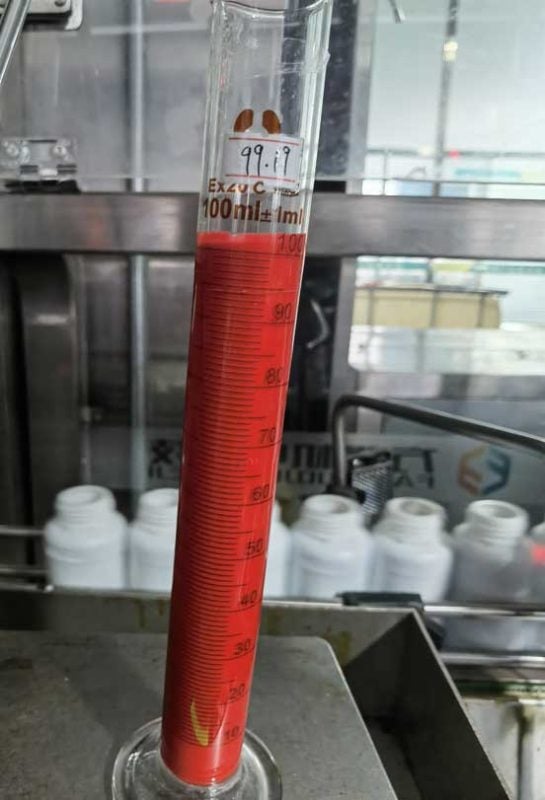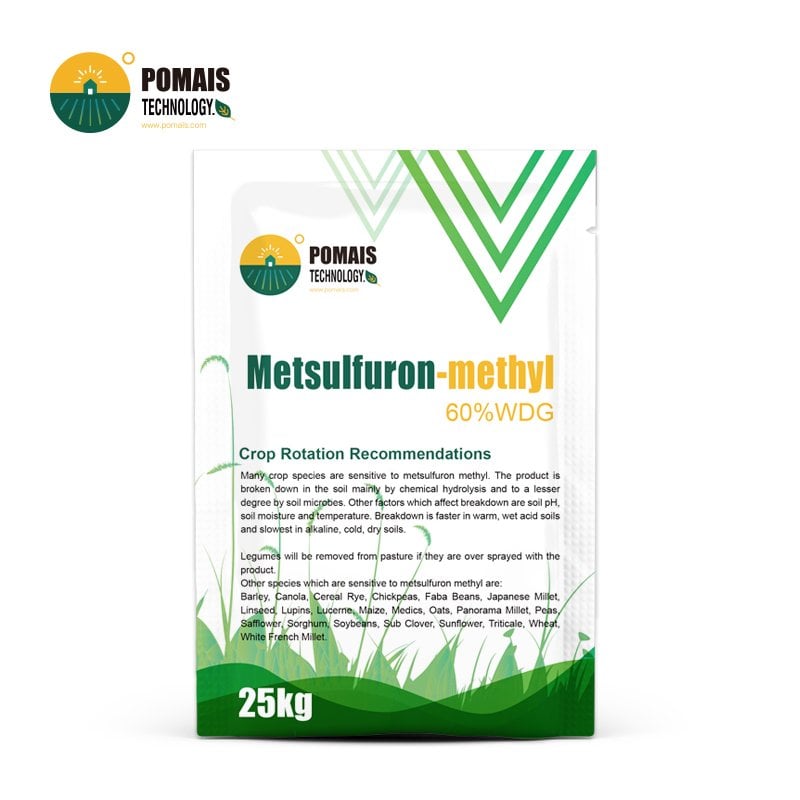Tebuconazole Systemic Fungicide for Crop Disease Control
Versatile Broad-Spectrum Protection for Crops, Turf, and Seeds
Tebuconazole is a highly effective systemic triazole fungicide that offers both preventative and curative control against a wide range of fungal diseases. Designed for modern agriculture, Tebuconazole fungicide helps protect cereals, vegetables, fruits, turf, and seeds from threats like powdery mildew, rusts, leaf spots, and blight.
With its ergosterol biosynthesis inhibition mechanism, Tebuconazole penetrates the plant system and distributes through the xylem, safeguarding not just existing tissue but also new growth. Whether applied as a foliar spray, soil drench, or seed treatment, this formulation delivers long-lasting performance and enhanced yield protection.
POMAIS offers multiple formulations—including EC and DS types—with support for OEM packaging, private label printing, and registration assistance. From turf management to cereal protection, Tebuconazole is a reliable component of integrated disease control programs.
- Designed for Professional Buyers & Bulk Orders
- This product is available for business purchase and large-scale distribution.
- We support custom packaging, labeling, and formulation to meet your market needs.
- Let’s build your brand together.

About Tebuconazole Systemic Fungicide for Crop Disease Control
About Tebuconazole Systemic Fungicide for Crop Disease Control
| Product Name | Tebuconazole fungicide |
|---|---|
| Active Ingredient | Tebuconazole |
| CAS Number | 107534-96-3 |
| Molecular Formula | C16H22ClN3O |
| Target Diseases | Powdery mildew, rust, leaf spot, anthracnose, and other fungal diseases |
| Applicable Uses | Used on cereals, fruits, vegetables, nuts, and ornamentals |
| Dosage | Typically 0.5-1.0 L per hectare; follow product label for specific instructions |
| Mode of Action | Systemic fungicide; inhibits the biosynthesis of ergosterol, essential for fungal cell membranes |
| Formulation Type | Emulsifiable Concentrate (EC) |
| Benefits | Provides broad-spectrum disease control, promotes plant health, and increases yield potential |
| Packaging Types | Available in 500ml, 1L, and 5L containers |
| Company Strengths | POMAIS offers high-quality Tebuconazole formulations, supports OEM/ODM services, and provides competitive pricing and tailored packaging options |
How Tebuconazole Works – Systemic Action with Dual Preventive and Curative Properties
Tebuconazole is a triazole-class systemic fungicide that acts as an ergosterol biosynthesis inhibitor (EBI). Ergosterol is an essential component of fungal cell membranes, and by blocking its synthesis, Tebuconazole disrupts membrane formation, leading to the collapse of fungal cell structure and eventual death.
Once applied, Tebuconazole is rapidly absorbed by the plant and translocated through the xylem to protect not only the treated area but also new growing tissues. This systemic movement ensures residual protection, giving crops sustained defense against reinfection and secondary outbreaks.
Its mode of action provides:
- Preventive activity by stopping fungal growth before infection establishes
- Curative activity by halting early-stage infections
- Eradicative potential against established pathogens when applied promptly
This triple-function approach makes Tebuconazole a vital tool in integrated fungal disease management, especially in high-value crops where consistent performance and residue control are critical.
Application Methods – Flexible Usage Across Seeds, Soil, and Foliage
Tebuconazole fungicide is formulated for flexible application across various crop stages and disease pressures. Whether you’re treating seeds before sowing or applying a foliar spray during vegetative growth, Tebuconazole adapts to different agronomic needs and delivers reliable protection.
1. Seed Treatment
- Application: Apply as a coating on cereal, vegetable, or legume seeds before planting.
- Function: Controls early-season fungal threats such as damping-off, root rot, and seed-borne pathogens.
- Benefits:
- Protects seedlings during critical emergence stages
- Improves germination rates and uniform crop establishment
- Enhances early root development and vigor
2. Soil Drench
- Application: Use as a root-zone drench in nursery trays, transplant beds, turf, and perennial crops.
- Function: Targets soil-borne pathogens like Rhizoctonia, Pythium, and Fusarium.
- Benefits:
- Direct protection at the root level
- Boosts plant resilience under humid or disease-prone soil conditions
- Reduces root decay and secondary infections
3. Foliar Spray
- Application: Apply during active growth to cereals, vegetables, fruits, and turf.
- Function: Controls leaf spots, blights, rusts, and powdery mildew.
- Benefits:
- Rapid disease knockdown with systemic redistribution
- Long-lasting leaf protection, including new growth
- Enhances photosynthesis and crop yield retention
This multi-route flexibility allows growers to tailor Tebuconazole’s use based on crop stage, environmental pressure, and production goals—supporting both preventive and responsive disease management.
Target Crops and Fungal Diseases – Broad-Spectrum Protection for High-Value Agriculture
Tebuconazole fungicide delivers exceptional control across a wide range of crops by targeting some of the most damaging fungal diseases. Its systemic action ensures thorough protection not only for current foliage but also for new growth, making it a reliable choice for both field-scale and intensive farming operations.
Application Overview
| Crop | Target Diseases | Recommended Rate |
|---|---|---|
| Wheat | Leaf rust, Powdery mildew, Septoria leaf spot | 200–300 ml/ha |
| Barley | Net blotch, Rust, Scald | 250–350 ml/ha |
| Rice | Sheath blight, Blast, Dirty panicle | 200–300 ml/ha |
| Turf | Dollar spot, Anthracnose, Brown patch | 300–500 ml/ha |
| Fruit Trees | Apple scab, Leaf spot, Brown rot | 250–400 ml/ha |
| Vegetables | Leaf spot, Powdery mildew, Early blight | 200–300 ml/ha |
Key Features Across Crops:
- Cereal crops: Tebuconazole supports yield protection and grain quality by reducing foliar diseases and lodging caused by weakened stems.
- Turf and ornamentals: Ideal for professional turf care and golf course management, where aesthetics and disease suppression are critical.
- Fruit trees and vegetables: Provides curative and protective action on sensitive crops with low phytotoxicity and strong residual performance.
Whether your crop is under pressure from foliar pathogens or root-infecting fungi, Tebuconazole offers the versatility and strength needed to protect investment and maximize harvest outcomes.
Formulations & Concentrations – Tailored Options for Diverse Application Needs
Tebuconazole is available in multiple formulations and concentrations to support different application methods, regulatory markets, and user preferences. Whether you need a seed treatment for early-stage protection or a high-performance foliar spray for curative action, POMAIS offers flexible solutions.
Commonly Available Formulations:
1. Tebuconazole 250g/L EC (Emulsifiable Concentrate)
- Most widely used formulation for foliar and soil applications
- Offers strong penetration, rapid absorption, and uniform distribution within plant tissue
- Ideal for cereals, fruits, vegetables, and turf
2. Tebuconazole 3.6F
- Flowable concentrate with enhanced storage stability
- Effective under variable field conditions with low phytotoxicity
- Preferred for precision spraying in sensitive horticultural crops
3. Tebuconazole 2 DS (Dry Seed Treatment)
- Formulated for direct application to cereal and legume seeds
- Protects against seed-borne and early soil pathogens
- Enhances early vigor, root establishment, and crop uniformity
Mixed-Formulation Products Featuring Tebuconazole:
- Fluopyram + Tebuconazole – Enhanced spectrum and residual action
- Azoxystrobin + Tebuconazole – Dual-site activity for resistance management
- Tebuconazole + Trifloxystrobin – Broad control of foliar and fruit diseases
- Tebuconazole + Imidacloprid – Combined insecticide + fungicide for seed or soil use
- 25 Trifloxystrobin + 50 Tebuconazole – High-efficiency combination for fruits and vegetables
All formulations are developed to meet international quality standards and can be adjusted for OEM production, export regulations, and customized use scenarios.
Tank Mix Compatibility & Co-Formulations – Designed for Synergy and Resistance Management
Tebuconazole fungicide is widely recognized for its compatibility with other agrochemicals and its performance in co-formulated products. Whether used as a single active or in multi-mode blends, it supports both broad-spectrum control and resistance management strategies.
Tank Mix Compatibility:
- Compatible with most fungicides, insecticides, and foliar fertilizers
- Frequently tank-mixed with:
- Azoxystrobin – for dual-site action and extended residual activity
- Chlorothalonil – for contact protection and broad-spectrum synergy
- Imidacloprid – for seed or soil applications requiring insect-fungicide combination
- Avoid mixing with strong alkaline or highly acidic products; perform a jar test before large-scale application
Proper tank mixing improves field efficiency by reducing spray passes, expanding disease control spectrum, and supporting IPM (Integrated Pest Management) protocols.
Notable Combination Formulations:
| Formulation | Function |
|---|---|
| Fluopyram + Tebuconazole | Enhanced action on fruit and vegetable fungal diseases |
| Azoxystrobin + Tebuconazole | Dual-mode fungicide for cereals and specialty crops |
| Tebuconazole + Trifloxystrobin | Broad-spectrum control with curative and residual effect |
| Propiconazole + Tebuconazole | Synergistic triazole combination for rust and blotch |
| Tebuconazole + Imidacloprid | Combined pest and disease protection in seed treatment |
| 25 Trifloxystrobin + 50 Tebuconazole | High-concentration product for tree fruits and vegetables |
These formulations are available for bulk supply and OEM customization, helping distributors expand their portfolio with proven, market-ready solutions.
Safety Profile & Environmental Behavior – Low-Toxicity Protection with Responsible Residue Control
Tebuconazole fungicide is classified as a low-toxicity triazole fungicide with favorable environmental characteristics. When used according to label instructions, it provides effective disease control while maintaining safety for users, crops, and surrounding ecosystems.
Human and Animal Safety:
- Toxicity Classification: WHO Class III – Slightly hazardous
- Oral LD₅₀ (rats): >1700 mg/kg – Low acute toxicity
- Safe to handle with standard PPE (gloves, goggles, long sleeves)
- Minimal skin and eye irritation under normal use conditions
- Pre-harvest intervals (PHI) vary by crop and country; follow local label instructions
- Field re-entry interval (REI): Typically 24 hours or as per regulations
Environmental Behavior:
- Systemic but not highly persistent, with degradation occurring through microbial action and photolysis
- Moderate soil binding reduces leaching risk to groundwater
- Rainfast within 2–4 hours of application under normal conditions
- Not highly toxic to birds or fish under field-use concentrations
- To protect pollinators, avoid spraying during peak bee foraging periods or when crops are in full bloom
Responsible Use Guidelines:
- Do not apply near surface water bodies or drainage ditches
- Avoid drift onto non-target crops or flowering plants
- Always store in original packaging away from sunlight and moisture
Tebuconazole’s balance of efficacy, environmental breakdown, and safety makes it suitable for use in conventional and integrated farming systems, including cereals, vegetables, orchards, and turf environments.
Packaging & OEM Support – Flexible Solutions for Global Distribution
To meet the diverse needs of agricultural distributors, importers, and brand owners, POMAIS offers Tebuconazole fungicide in multiple packaging formats and supports full-scale OEM and private label services.
Standard Packaging Options:
- 500ml / 1L / 5L HDPE or COEX bottles (for EC and SC formulations)
- 100ml–250ml mini bottles for sampling or retail market use
- Bulk options available in 20L drums or 200L barrels for large-scale use or repackaging
All containers are:
- Leak-proof, UV-resistant, and compliant with UN transport safety codes
- Customizable in label language, design, and brand elements
OEM & Private Label Services:
- Custom formulation adjustment upon request
- Multi-language label printing and regulatory formatting
- Logo integration and brand styling
- Support for registration dossiers, including COA, MSDS, GLP data, ICAMA documentation
Whether you’re launching your own product line or expanding an existing catalog, we provide full technical and production support to accelerate your market entry and ensure product reliability.
Why Partner with POMAIS – A Reliable Source for Tebuconazole Fungicide Solutions
At POMAIS, we combine scientific expertise with practical agricultural insight to deliver high-performance fungicide products tailored to global market needs. Our Tebuconazole formulations are developed under strict quality control and are supported by a responsive and experienced export team.
What You Can Expect from Us:
- In-house production capacity with ISO-certified facilities
- Consistent quality control from raw materials to finished goods
- Flexible OEM services for private branding, multi-language packaging, and custom labeling
- Supportive documentation for product registration and import clearance (COA, MSDS, GLP, ICAMA)
- Strong export record in Asia, Africa, the Middle East, and Latin America
- Dedicated technical team to assist with application, resistance management, and product training
We’re not just a supplier—we’re your formulation partner. Whether you’re building a new fungicide portfolio or expanding an established brand, POMAIS provides the tools and services to help you grow with confidence.
Frequently Asked Questions About Tebuconazole Fungicide
1. What is the mode of action of Tebuconazole?
Tebuconazole works by inhibiting ergosterol biosynthesis, a critical component of fungal cell membranes. Without ergosterol, fungal cells lose their structural integrity and cannot proliferate, leading to their death. This systemic action ensures both preventive and curative control of many fungal diseases.
2. Is Tebuconazole a systemic fungicide?
Yes, Tebuconazole is a fully systemic fungicide, meaning it is absorbed into the plant and transported throughout its tissues. This allows it to protect both treated and newly emerged leaves from fungal attack.
3. Is Tebuconazole safe for bees and beneficial insects?
Tebuconazole generally has low toxicity to bees when used according to label instructions. However, it’s recommended to avoid spraying during peak bee activity (early morning or late evening) to minimize any potential impact.
4. What is Tebuconazole used for?
Tebuconazole is used to control a broad range of fungal diseases, including powdery mildew, rust, scab, blight, and anthracnose. It is effective on crops such as wheat, barley, rice, fruit trees, vegetables, turf, and ornamentals.
5. How does Tebuconazole compare to other triazole fungicides?
Compared to fungicides like Propiconazole or Difenoconazole, Tebuconazole offers a balanced spectrum of activity, longer residual efficacy, and stronger performance under curative applications. It is often chosen in resistance management programs for its unique efficacy profile.
6. Can Tebuconazole be used in tank mixes with other products?
Yes, Tebuconazole is highly compatible with many fungicides, insecticides, and foliar fertilizers. Always conduct a jar test and follow label directions before mixing with other agrochemicals.
7. What is the recommended dosage for Tebuconazole applications?
The dosage varies by crop and disease severity, but typically ranges from 200–500 ml/ha. Refer to specific label instructions or consult with our technical team for tailored application guidance.
8. Do you offer mixed formulations with Tebuconazole?
Yes, we supply several ready-to-use combinations including:
- Tebuconazole + Azoxystrobin
- Tebuconazole + Trifloxystrobin
- Tebuconazole + Imidacloprid
- Prothioconazole + Tebuconazole
These blends are developed to enhance efficacy and resistance management in field use.
| Product Name | Tebuconazole fungicide |
|---|---|
| Active Ingredient | Tebuconazole |
| CAS Number | 107534-96-3 |
| Molecular Formula | C16H22ClN3O |
| Target Diseases | Powdery mildew, rust, leaf spot, anthracnose, and other fungal diseases |
| Applicable Uses | Used on cereals, fruits, vegetables, nuts, and ornamentals |
| Dosage | Typically 0.5-1.0 L per hectare; follow product label for specific instructions |
| Mode of Action | Systemic fungicide; inhibits the biosynthesis of ergosterol, essential for fungal cell membranes |
| Formulation Type | Emulsifiable Concentrate (EC) |
| Benefits | Provides broad-spectrum disease control, promotes plant health, and increases yield potential |
| Packaging Types | Available in 500ml, 1L, and 5L containers |
| Company Strengths | POMAIS offers high-quality Tebuconazole formulations, supports OEM/ODM services, and provides competitive pricing and tailored packaging options |
How Tebuconazole Works – Systemic Action with Dual Preventive and Curative Properties
Tebuconazole is a triazole-class systemic fungicide that acts as an ergosterol biosynthesis inhibitor (EBI). Ergosterol is an essential component of fungal cell membranes, and by blocking its synthesis, Tebuconazole disrupts membrane formation, leading to the collapse of fungal cell structure and eventual death.
Once applied, Tebuconazole is rapidly absorbed by the plant and translocated through the xylem to protect not only the treated area but also new growing tissues. This systemic movement ensures residual protection, giving crops sustained defense against reinfection and secondary outbreaks.
Its mode of action provides:
- Preventive activity by stopping fungal growth before infection establishes
- Curative activity by halting early-stage infections
- Eradicative potential against established pathogens when applied promptly
This triple-function approach makes Tebuconazole a vital tool in integrated fungal disease management, especially in high-value crops where consistent performance and residue control are critical.
Application Methods – Flexible Usage Across Seeds, Soil, and Foliage
Tebuconazole fungicide is formulated for flexible application across various crop stages and disease pressures. Whether you’re treating seeds before sowing or applying a foliar spray during vegetative growth, Tebuconazole adapts to different agronomic needs and delivers reliable protection.
1. Seed Treatment
- Application: Apply as a coating on cereal, vegetable, or legume seeds before planting.
- Function: Controls early-season fungal threats such as damping-off, root rot, and seed-borne pathogens.
- Benefits:
- Protects seedlings during critical emergence stages
- Improves germination rates and uniform crop establishment
- Enhances early root development and vigor
2. Soil Drench
- Application: Use as a root-zone drench in nursery trays, transplant beds, turf, and perennial crops.
- Function: Targets soil-borne pathogens like Rhizoctonia, Pythium, and Fusarium.
- Benefits:
- Direct protection at the root level
- Boosts plant resilience under humid or disease-prone soil conditions
- Reduces root decay and secondary infections
3. Foliar Spray
- Application: Apply during active growth to cereals, vegetables, fruits, and turf.
- Function: Controls leaf spots, blights, rusts, and powdery mildew.
- Benefits:
- Rapid disease knockdown with systemic redistribution
- Long-lasting leaf protection, including new growth
- Enhances photosynthesis and crop yield retention
This multi-route flexibility allows growers to tailor Tebuconazole’s use based on crop stage, environmental pressure, and production goals—supporting both preventive and responsive disease management.
Target Crops and Fungal Diseases – Broad-Spectrum Protection for High-Value Agriculture
Tebuconazole fungicide delivers exceptional control across a wide range of crops by targeting some of the most damaging fungal diseases. Its systemic action ensures thorough protection not only for current foliage but also for new growth, making it a reliable choice for both field-scale and intensive farming operations.
Application Overview
| Crop | Target Diseases | Recommended Rate |
|---|---|---|
| Wheat | Leaf rust, Powdery mildew, Septoria leaf spot | 200–300 ml/ha |
| Barley | Net blotch, Rust, Scald | 250–350 ml/ha |
| Rice | Sheath blight, Blast, Dirty panicle | 200–300 ml/ha |
| Turf | Dollar spot, Anthracnose, Brown patch | 300–500 ml/ha |
| Fruit Trees | Apple scab, Leaf spot, Brown rot | 250–400 ml/ha |
| Vegetables | Leaf spot, Powdery mildew, Early blight | 200–300 ml/ha |
Key Features Across Crops:
- Cereal crops: Tebuconazole supports yield protection and grain quality by reducing foliar diseases and lodging caused by weakened stems.
- Turf and ornamentals: Ideal for professional turf care and golf course management, where aesthetics and disease suppression are critical.
- Fruit trees and vegetables: Provides curative and protective action on sensitive crops with low phytotoxicity and strong residual performance.
Whether your crop is under pressure from foliar pathogens or root-infecting fungi, Tebuconazole offers the versatility and strength needed to protect investment and maximize harvest outcomes.
Formulations & Concentrations – Tailored Options for Diverse Application Needs
Tebuconazole is available in multiple formulations and concentrations to support different application methods, regulatory markets, and user preferences. Whether you need a seed treatment for early-stage protection or a high-performance foliar spray for curative action, POMAIS offers flexible solutions.
Commonly Available Formulations:
1. Tebuconazole 250g/L EC (Emulsifiable Concentrate)
- Most widely used formulation for foliar and soil applications
- Offers strong penetration, rapid absorption, and uniform distribution within plant tissue
- Ideal for cereals, fruits, vegetables, and turf
2. Tebuconazole 3.6F
- Flowable concentrate with enhanced storage stability
- Effective under variable field conditions with low phytotoxicity
- Preferred for precision spraying in sensitive horticultural crops
3. Tebuconazole 2 DS (Dry Seed Treatment)
- Formulated for direct application to cereal and legume seeds
- Protects against seed-borne and early soil pathogens
- Enhances early vigor, root establishment, and crop uniformity
Mixed-Formulation Products Featuring Tebuconazole:
- Fluopyram + Tebuconazole – Enhanced spectrum and residual action
- Azoxystrobin + Tebuconazole – Dual-site activity for resistance management
- Tebuconazole + Trifloxystrobin – Broad control of foliar and fruit diseases
- Tebuconazole + Imidacloprid – Combined insecticide + fungicide for seed or soil use
- 25 Trifloxystrobin + 50 Tebuconazole – High-efficiency combination for fruits and vegetables
All formulations are developed to meet international quality standards and can be adjusted for OEM production, export regulations, and customized use scenarios.
Tank Mix Compatibility & Co-Formulations – Designed for Synergy and Resistance Management
Tebuconazole fungicide is widely recognized for its compatibility with other agrochemicals and its performance in co-formulated products. Whether used as a single active or in multi-mode blends, it supports both broad-spectrum control and resistance management strategies.
Tank Mix Compatibility:
- Compatible with most fungicides, insecticides, and foliar fertilizers
- Frequently tank-mixed with:
- Azoxystrobin – for dual-site action and extended residual activity
- Chlorothalonil – for contact protection and broad-spectrum synergy
- Imidacloprid – for seed or soil applications requiring insect-fungicide combination
- Avoid mixing with strong alkaline or highly acidic products; perform a jar test before large-scale application
Proper tank mixing improves field efficiency by reducing spray passes, expanding disease control spectrum, and supporting IPM (Integrated Pest Management) protocols.
Notable Combination Formulations:
| Formulation | Function |
|---|---|
| Fluopyram + Tebuconazole | Enhanced action on fruit and vegetable fungal diseases |
| Azoxystrobin + Tebuconazole | Dual-mode fungicide for cereals and specialty crops |
| Tebuconazole + Trifloxystrobin | Broad-spectrum control with curative and residual effect |
| Propiconazole + Tebuconazole | Synergistic triazole combination for rust and blotch |
| Tebuconazole + Imidacloprid | Combined pest and disease protection in seed treatment |
| 25 Trifloxystrobin + 50 Tebuconazole | High-concentration product for tree fruits and vegetables |
These formulations are available for bulk supply and OEM customization, helping distributors expand their portfolio with proven, market-ready solutions.
Safety Profile & Environmental Behavior – Low-Toxicity Protection with Responsible Residue Control
Tebuconazole fungicide is classified as a low-toxicity triazole fungicide with favorable environmental characteristics. When used according to label instructions, it provides effective disease control while maintaining safety for users, crops, and surrounding ecosystems.
Human and Animal Safety:
- Toxicity Classification: WHO Class III – Slightly hazardous
- Oral LD₅₀ (rats): >1700 mg/kg – Low acute toxicity
- Safe to handle with standard PPE (gloves, goggles, long sleeves)
- Minimal skin and eye irritation under normal use conditions
- Pre-harvest intervals (PHI) vary by crop and country; follow local label instructions
- Field re-entry interval (REI): Typically 24 hours or as per regulations
Environmental Behavior:
- Systemic but not highly persistent, with degradation occurring through microbial action and photolysis
- Moderate soil binding reduces leaching risk to groundwater
- Rainfast within 2–4 hours of application under normal conditions
- Not highly toxic to birds or fish under field-use concentrations
- To protect pollinators, avoid spraying during peak bee foraging periods or when crops are in full bloom
Responsible Use Guidelines:
- Do not apply near surface water bodies or drainage ditches
- Avoid drift onto non-target crops or flowering plants
- Always store in original packaging away from sunlight and moisture
Tebuconazole’s balance of efficacy, environmental breakdown, and safety makes it suitable for use in conventional and integrated farming systems, including cereals, vegetables, orchards, and turf environments.
Packaging & OEM Support – Flexible Solutions for Global Distribution
To meet the diverse needs of agricultural distributors, importers, and brand owners, POMAIS offers Tebuconazole fungicide in multiple packaging formats and supports full-scale OEM and private label services.
Standard Packaging Options:
- 500ml / 1L / 5L HDPE or COEX bottles (for EC and SC formulations)
- 100ml–250ml mini bottles for sampling or retail market use
- Bulk options available in 20L drums or 200L barrels for large-scale use or repackaging
All containers are:
- Leak-proof, UV-resistant, and compliant with UN transport safety codes
- Customizable in label language, design, and brand elements
OEM & Private Label Services:
- Custom formulation adjustment upon request
- Multi-language label printing and regulatory formatting
- Logo integration and brand styling
- Support for registration dossiers, including COA, MSDS, GLP data, ICAMA documentation
Whether you’re launching your own product line or expanding an existing catalog, we provide full technical and production support to accelerate your market entry and ensure product reliability.
Why Partner with POMAIS – A Reliable Source for Tebuconazole Fungicide Solutions
At POMAIS, we combine scientific expertise with practical agricultural insight to deliver high-performance fungicide products tailored to global market needs. Our Tebuconazole formulations are developed under strict quality control and are supported by a responsive and experienced export team.
What You Can Expect from Us:
- In-house production capacity with ISO-certified facilities
- Consistent quality control from raw materials to finished goods
- Flexible OEM services for private branding, multi-language packaging, and custom labeling
- Supportive documentation for product registration and import clearance (COA, MSDS, GLP, ICAMA)
- Strong export record in Asia, Africa, the Middle East, and Latin America
- Dedicated technical team to assist with application, resistance management, and product training
We’re not just a supplier—we’re your formulation partner. Whether you’re building a new fungicide portfolio or expanding an established brand, POMAIS provides the tools and services to help you grow with confidence.
Frequently Asked Questions About Tebuconazole Fungicide
1. What is the mode of action of Tebuconazole?
Tebuconazole works by inhibiting ergosterol biosynthesis, a critical component of fungal cell membranes. Without ergosterol, fungal cells lose their structural integrity and cannot proliferate, leading to their death. This systemic action ensures both preventive and curative control of many fungal diseases.
2. Is Tebuconazole a systemic fungicide?
Yes, Tebuconazole is a fully systemic fungicide, meaning it is absorbed into the plant and transported throughout its tissues. This allows it to protect both treated and newly emerged leaves from fungal attack.
3. Is Tebuconazole safe for bees and beneficial insects?
Tebuconazole generally has low toxicity to bees when used according to label instructions. However, it’s recommended to avoid spraying during peak bee activity (early morning or late evening) to minimize any potential impact.
4. What is Tebuconazole used for?
Tebuconazole is used to control a broad range of fungal diseases, including powdery mildew, rust, scab, blight, and anthracnose. It is effective on crops such as wheat, barley, rice, fruit trees, vegetables, turf, and ornamentals.
5. How does Tebuconazole compare to other triazole fungicides?
Compared to fungicides like Propiconazole or Difenoconazole, Tebuconazole offers a balanced spectrum of activity, longer residual efficacy, and stronger performance under curative applications. It is often chosen in resistance management programs for its unique efficacy profile.
6. Can Tebuconazole be used in tank mixes with other products?
Yes, Tebuconazole is highly compatible with many fungicides, insecticides, and foliar fertilizers. Always conduct a jar test and follow label directions before mixing with other agrochemicals.
7. What is the recommended dosage for Tebuconazole applications?
The dosage varies by crop and disease severity, but typically ranges from 200–500 ml/ha. Refer to specific label instructions or consult with our technical team for tailored application guidance.
8. Do you offer mixed formulations with Tebuconazole?
Yes, we supply several ready-to-use combinations including:
- Tebuconazole + Azoxystrobin
- Tebuconazole + Trifloxystrobin
- Tebuconazole + Imidacloprid
- Prothioconazole + Tebuconazole
These blends are developed to enhance efficacy and resistance management in field use.
Related Products
Latest News

